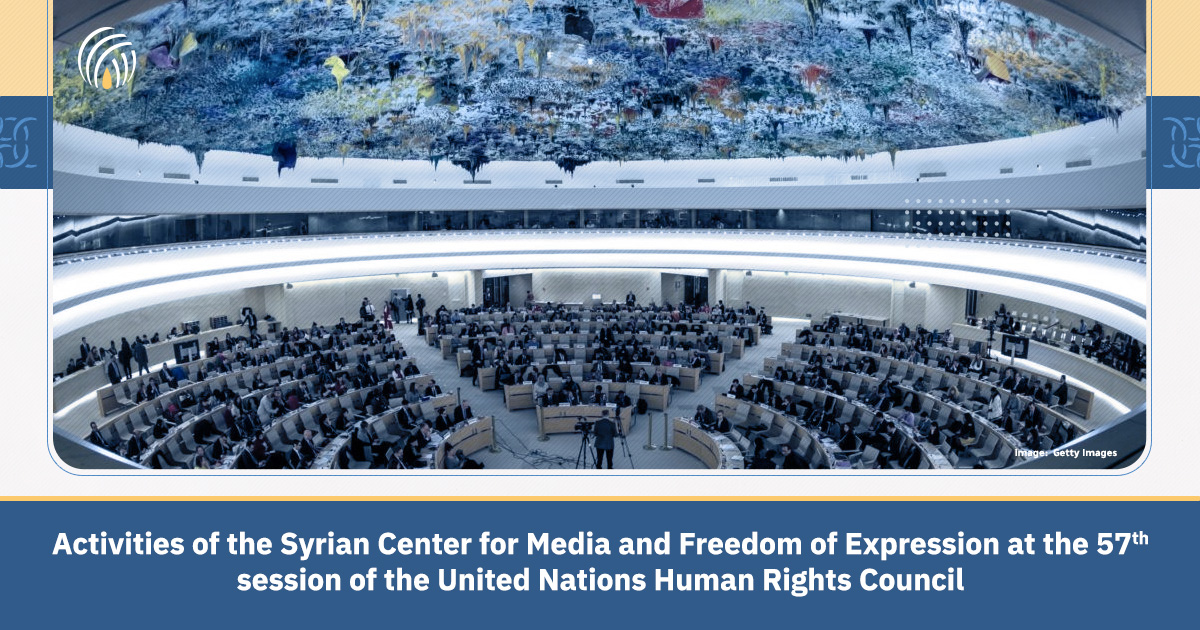Where are They?

SNHR has released its annual report on the International Day of the Victims of Enforced Disappearances on August 30 of each year.
The report, entitled “Where are They?”, documents no less than 85,000 individuals who have fallen a victim to the crime of enforced-disappearance at the hands of the parties to the conflict in Syria, adding that enforced-disappearance has become a weapon of war in Syria.
The report says that arbitrary arrests has taken a form similar to the kind an abduction ring would conform to, as they are made at checkpoints and in raids with no arrest warrants, and the abductees are forbidden from contacting their families or lawyers, not to mention that the authorities deny that they have them. According to the report, most of the arrest cases have turned into enforced-disappearances.
The report defines a forcibly disappeared person as a detainee that an entire month has passed since a piece of information was revealed on his fate by the party that made the arrest. the detainee would still be deemed forcibly disappeared as long as the party responsible for his disappearance won’t acknowledge that they have him even if information surfaced about his whereabouts.
The report draws upon the interviews we conducted with enforced-disappearance victims’ families or friends who witnessed the arrest, where the report includes 12 accounts. And, Secondly, the detainees and enforced-disappearance archive which we update daily with new arrest and enforced-disappearance incidents.
The report notes that the Syrian regime is responsible for 90% of all the enforced-disappearance crimes in Syria. Furthermore, the report stresses that The Syrian regime is the first and primary party that started using enforced-disappearance practices against its foes in March 2011. The Syrian regime used enforced-disappearance in a systematic manner as a weapon of war in parallel with killings, sexual violence, and blackmailing. Enforced-disappearance grew more rampant with the spread of the non-official armed groups that fought alongside the Syrian army and security forces. These groups established their own detention centers and carried out arrests and abductions that exhibited a sectarian nature in most cases and were done in mass numbers.
The report records that no less than 85,036 persons are still forcibly disappeared at the hands of the parties to the conflict in Syria between March 2011 and August 2017. The Syrian regime was responsible for 76,656 enforced-disappearance cases, including 1,116 children and 4,219 women (adult female), while 4,698 individuals, including 204 children and 182 women, have been forcibly disappeared at the hands of ISIS, in addition to 1,121 individuals, including seven children and 12 women, who have been forcibly disappeared at the hands of Fateh al Sham Front, whereas Self-Management forces were responsible for the enforced-disappearance of no less than 1,143 individuals, including 22 children and 33 women. Lastly, no less than 1,418 individuals, including 178 children and 364 women, have been forcibly disappeared at the hands of armed opposition factions.
According to the report, the largest portion of forcibly disappeared persons were in Damascus suburbs governorate, followed by Daraa and Damascus governorates.
The report stresses that enforced-disappearance practices constitute a breach of the Syrian constitution and the he International Convention for the Protection of All Persons from Enforced Disappearance which stated in the first Article that:
“1. No one shall be subjected to enforced disappearance.
2. No exceptional circumstances whatsoever, whether a state of war or a threat of war, internal political instability or any other public emergency, may be invoked as a justification for enforced disappearance.”
Even though Syria is not a party to this agreement and hasn’t signed it, the criminalization of enforced-disappearance is considered a part of the customary international law.
The report adds that the Syrian government has failed to protect its people from the crime of enforced-disappearance. Even more, the government was the party who practiced this crime in a fathomless manner in the modern age. The international instruments on human rights establish that the burden to assert the state of the individuals detained by the government falls on the government which arrested or abducted them. There must be an investigation into all the deaths that take place inside detention centers. Additionally, the four other parties have done the same to some degree with taking into consideration the scale and quantity of individuals who suffered enforced-disappearance.
The report calls on the United Nations and the Security Council to put an end the disease of enforced-disappearance that run rampant in Syria, as it poses a threat to the society’s safety and stability, issue a special statement on forcibly disappeared persons in Syria that condemns the practices of the Syrian regime and its allies as well as the other four parties, and apply more pressure towards giving the Commission of Inquiry and the International Committee of the Red Cross unrestricted access to all detention centers.
The report emphasizes that the Security Council should monitor the implementation of its Resolutions and bind the parties to these Resolutions – most notably Resolution 2024 and 2139- and take action on the grounds of these Resolutions.
The report calls on the Human Rights Council to follow on the issue of detainees and forcibly disappeared persons in Syria and shed more light on it in all the periodic annual meetings.
Moreover, the report stresses that the Working Group on Enforced or Involuntary Disappearances should increase the number of people working on the issue of forcibly disappeared persons at office of the Special Rapporteur on enforced-disappearance in Syria in light of the magnitude and size of the cases of forcibly disappeared persons in Syria.
Lastly, the report calls on the Joint Investigative Mechanism to start investigating the new cases that were included in this report.






